Pen needle hub having increased contact area
Horvath February 23, 2
U.S. patent number 10,926,044 [Application Number 16/205,686] was granted by the patent office on 2021-02-23 for pen needle hub having increased contact area. This patent grant is currently assigned to Becton, Dickinson and Company. The grantee listed for this patent is Becton, Dickinson and Company. Invention is credited to Joshua D. Horvath.
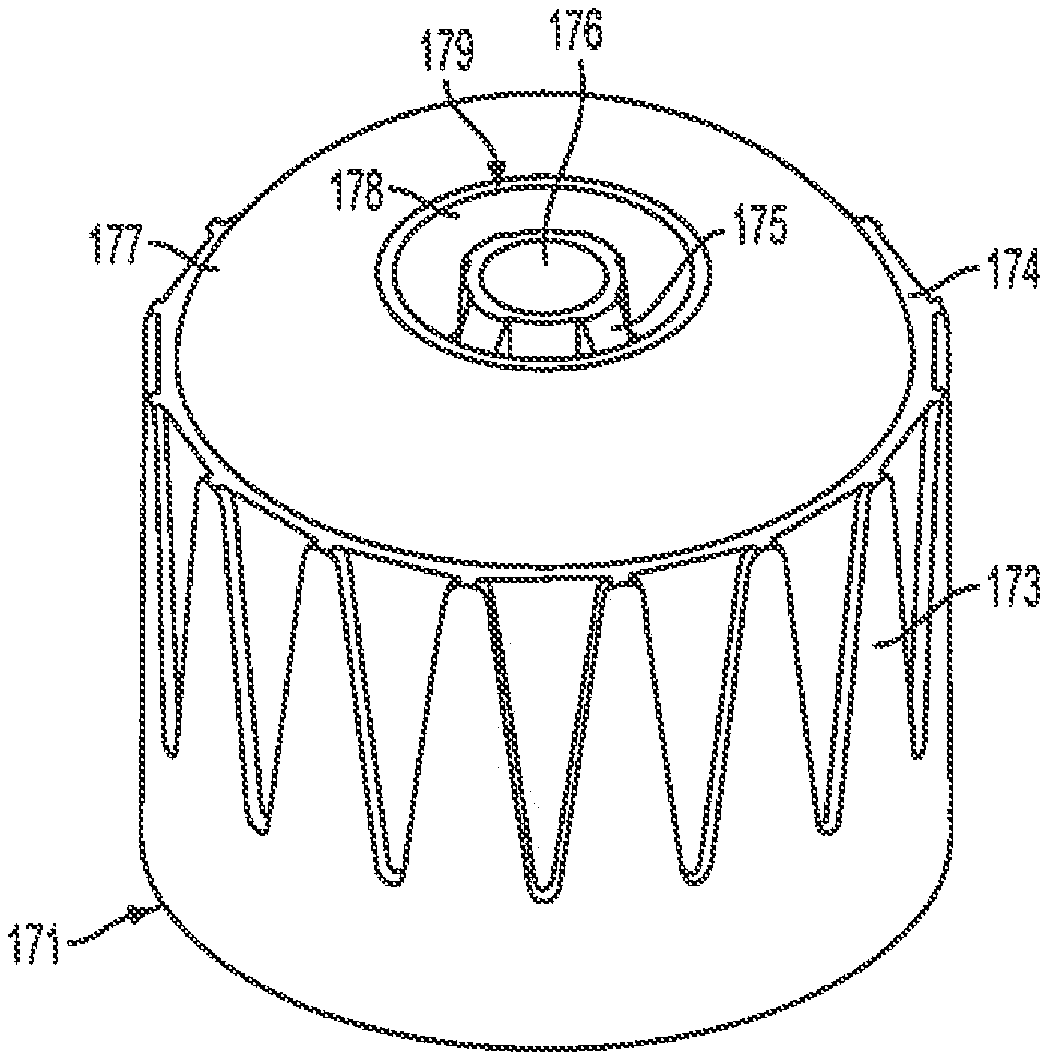
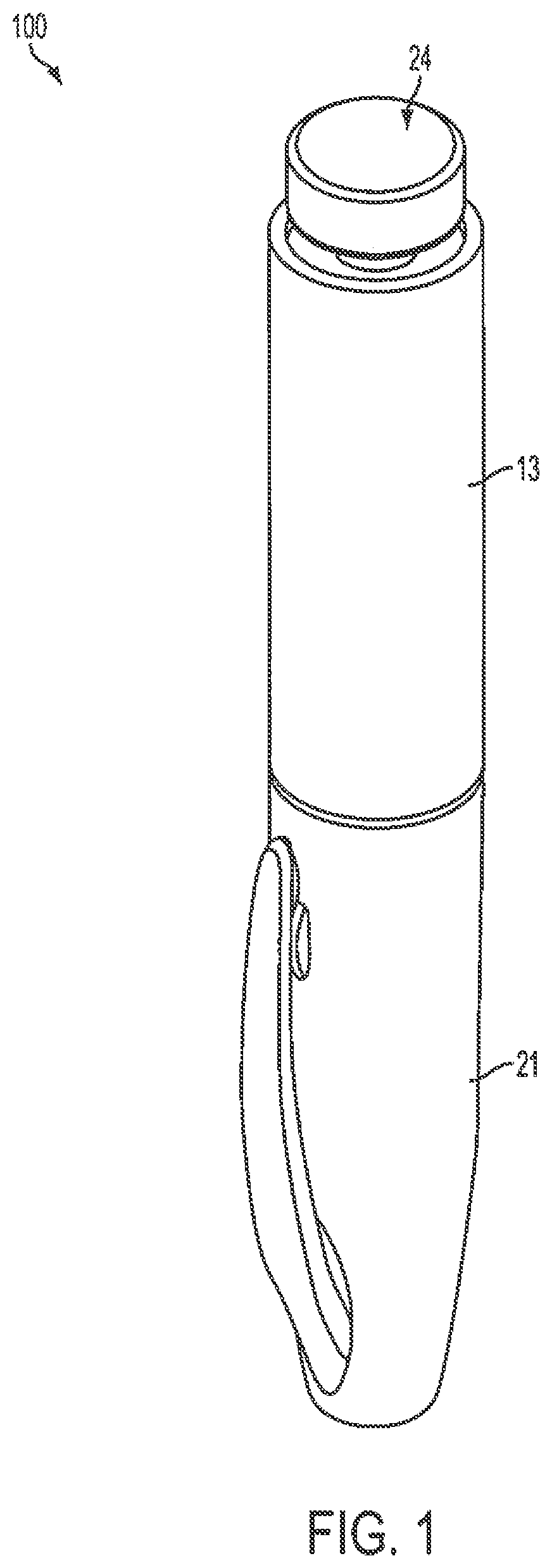
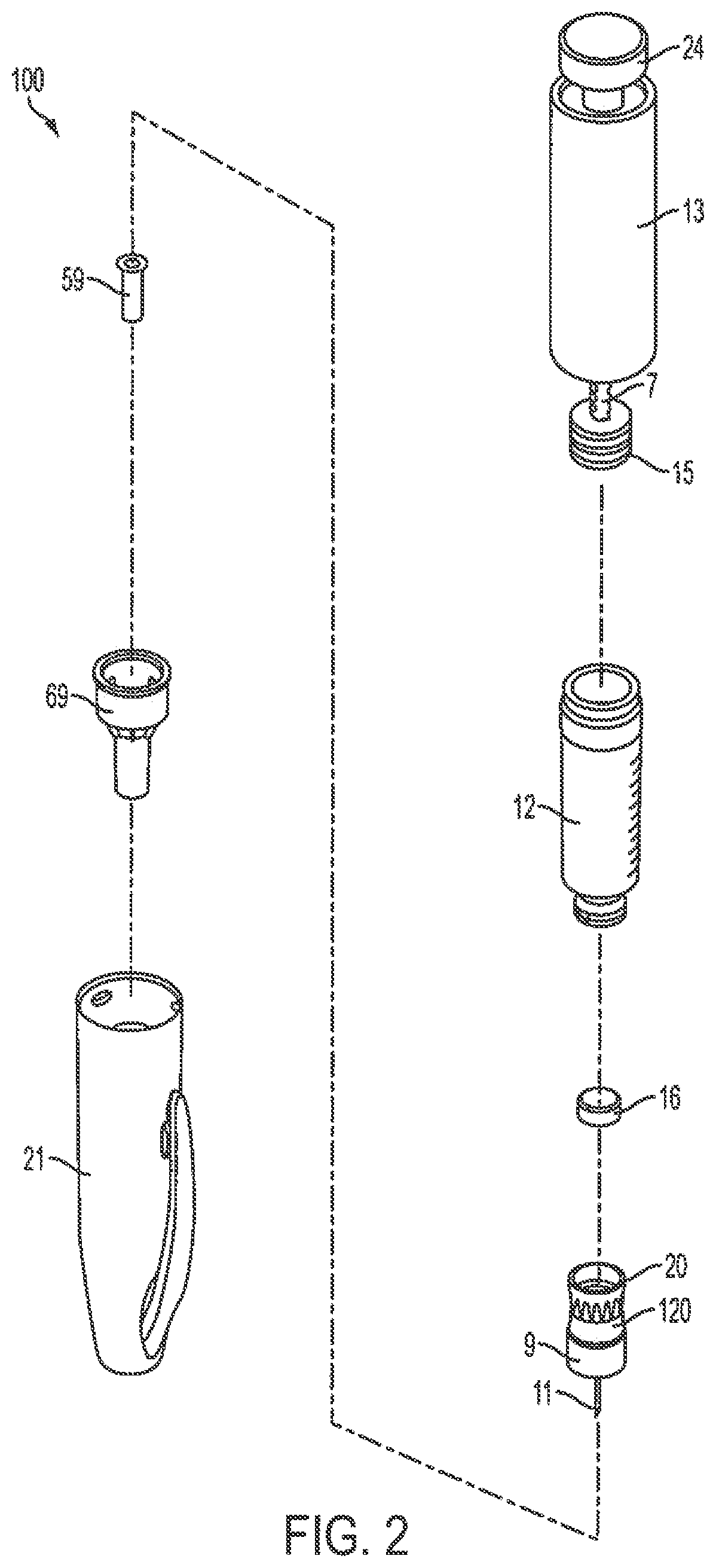
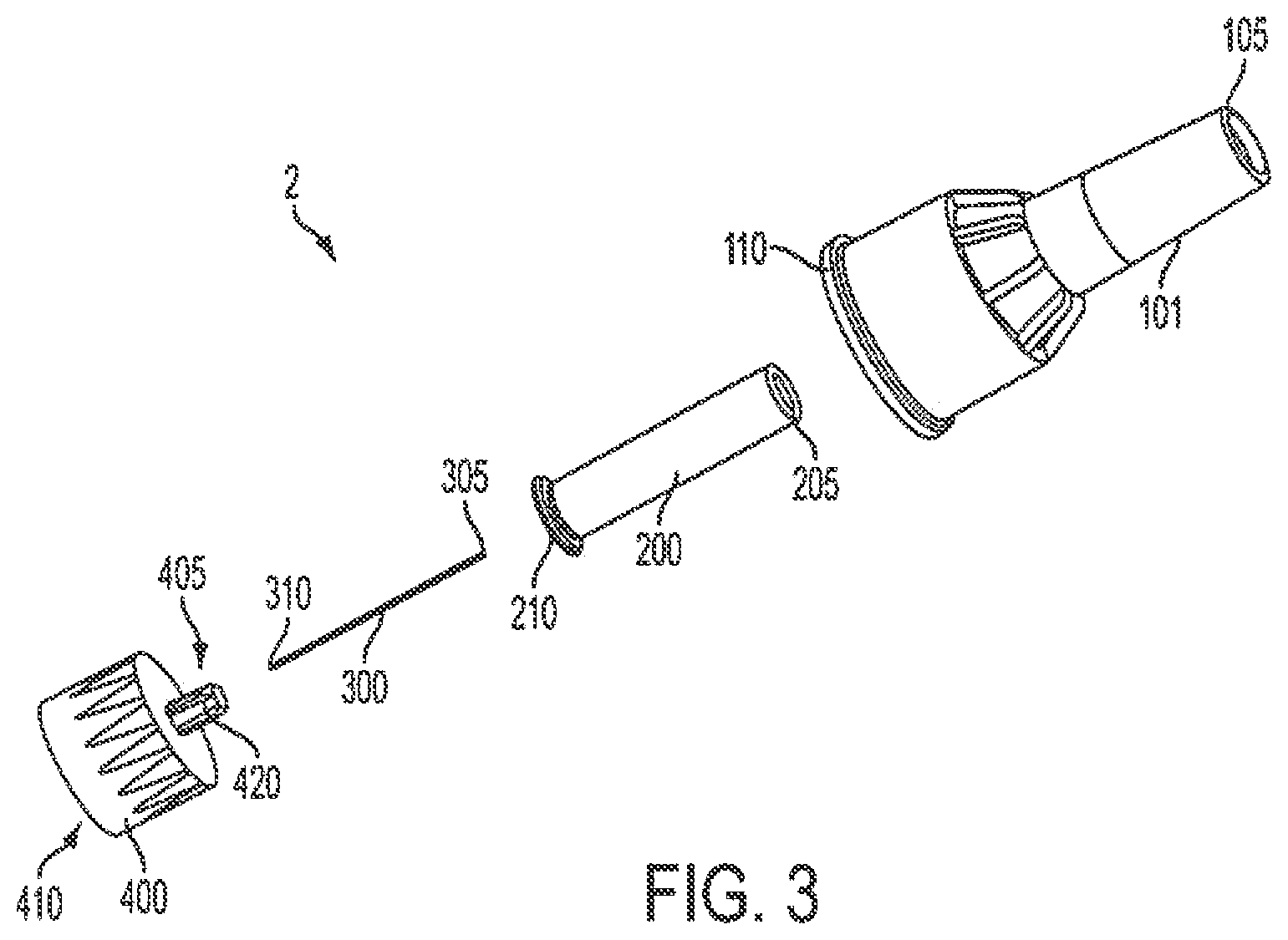

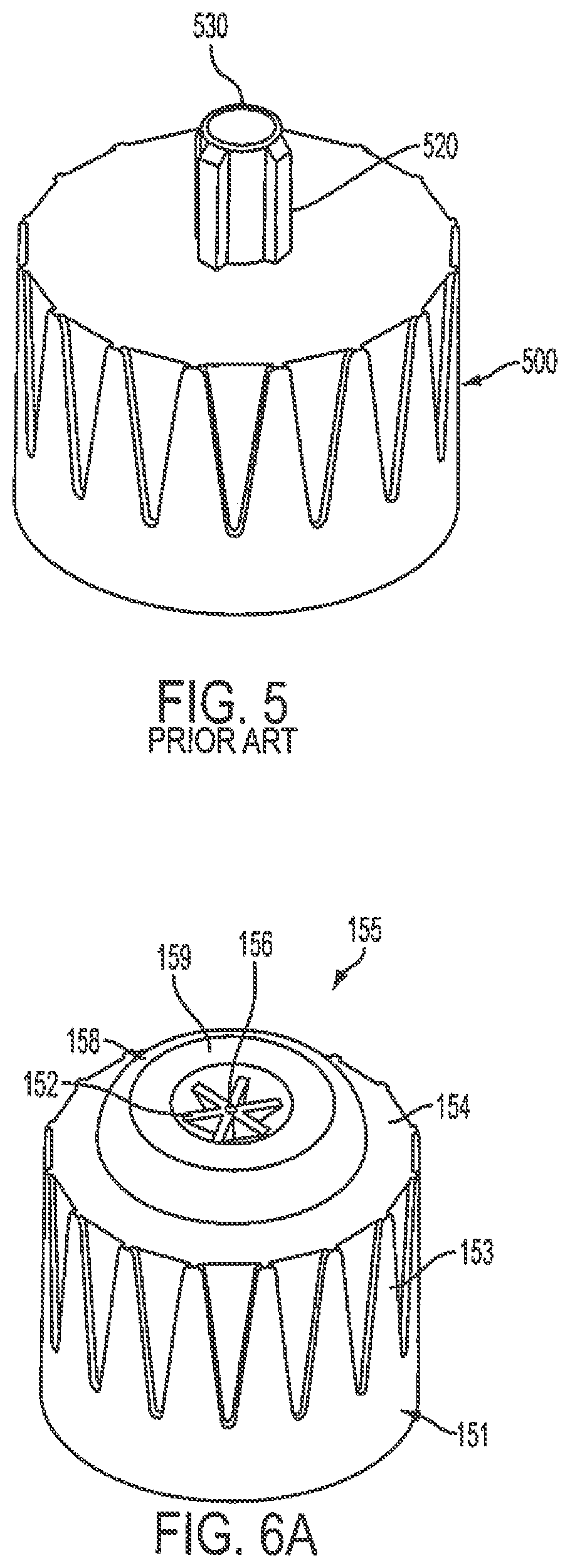
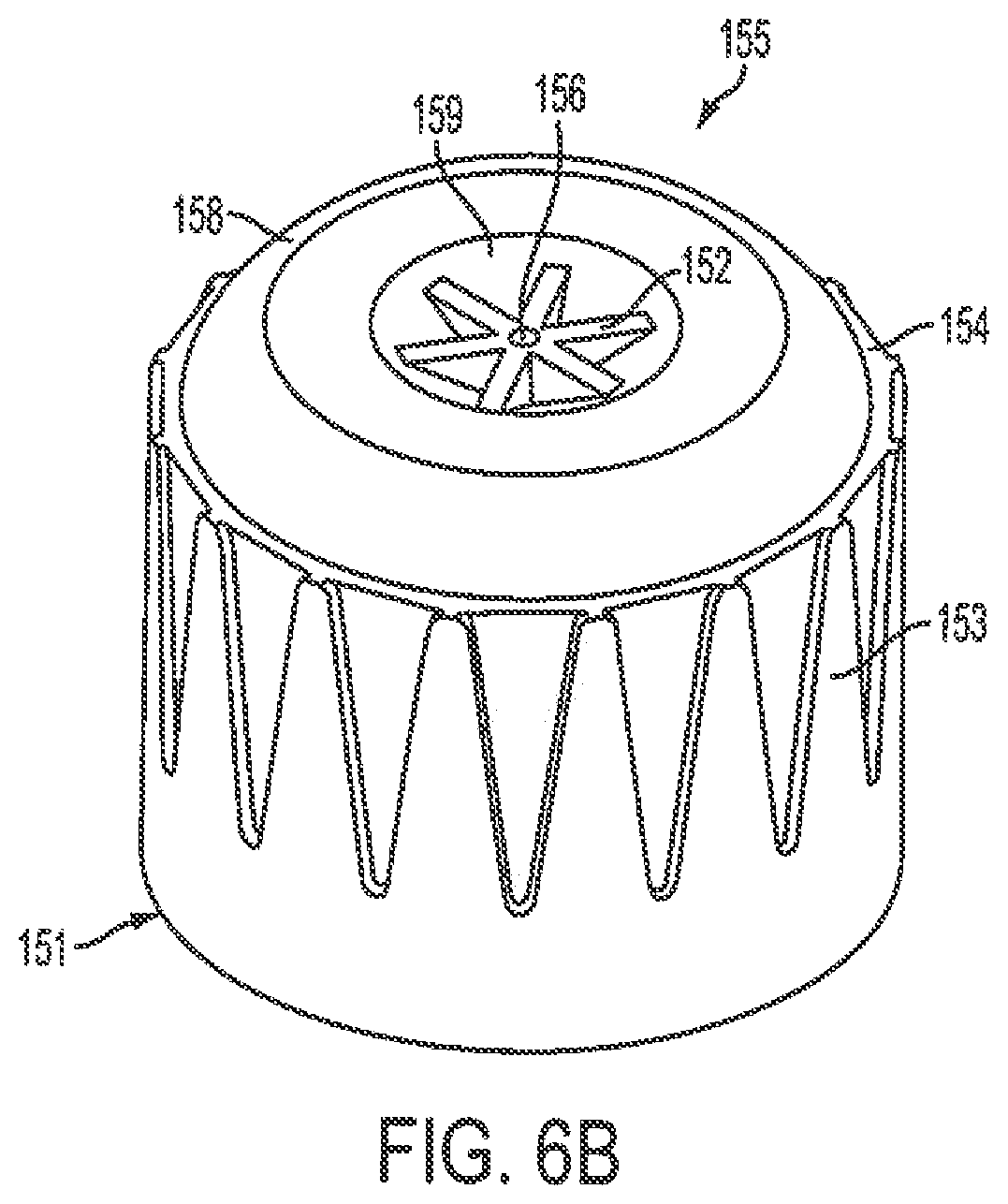
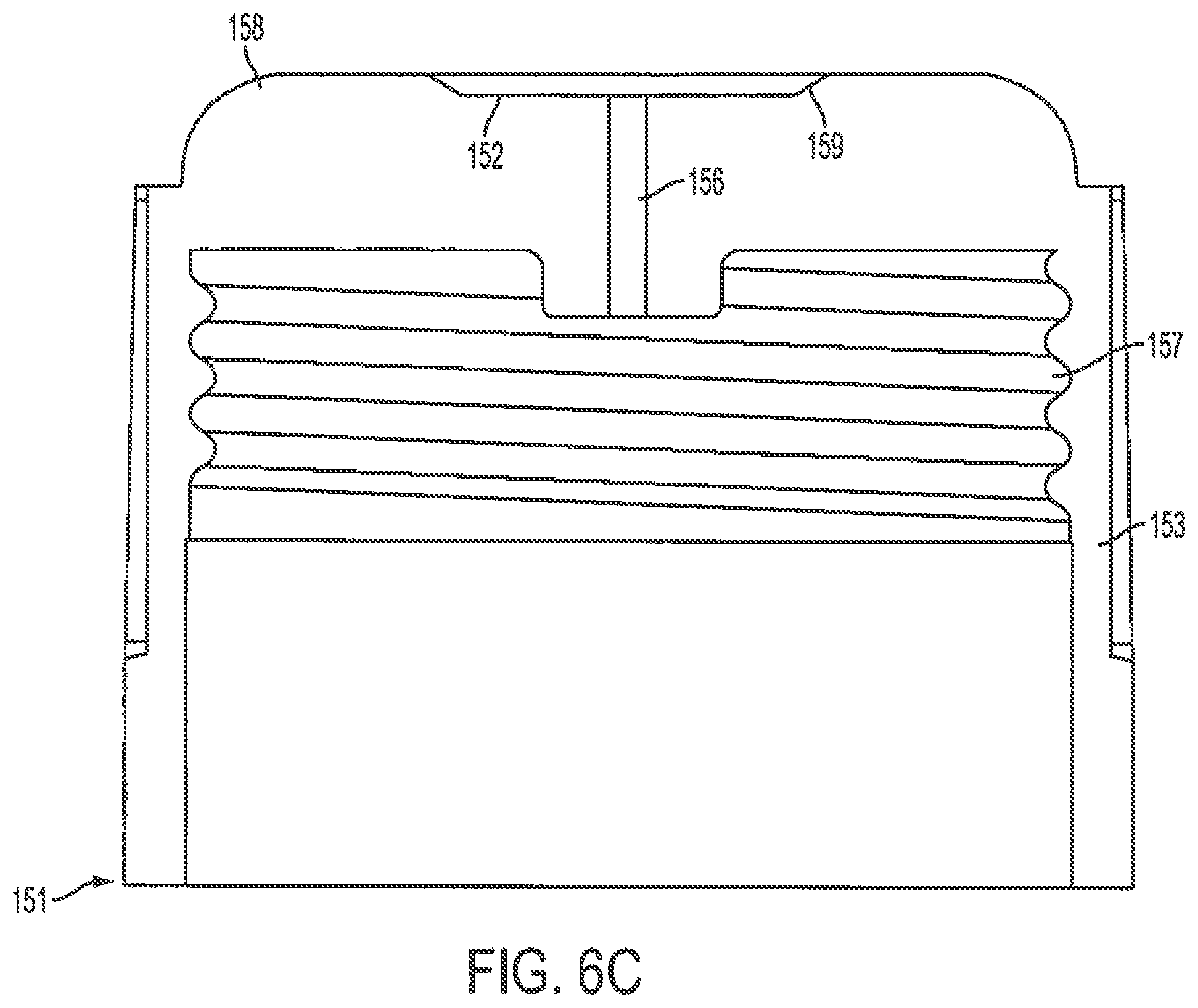
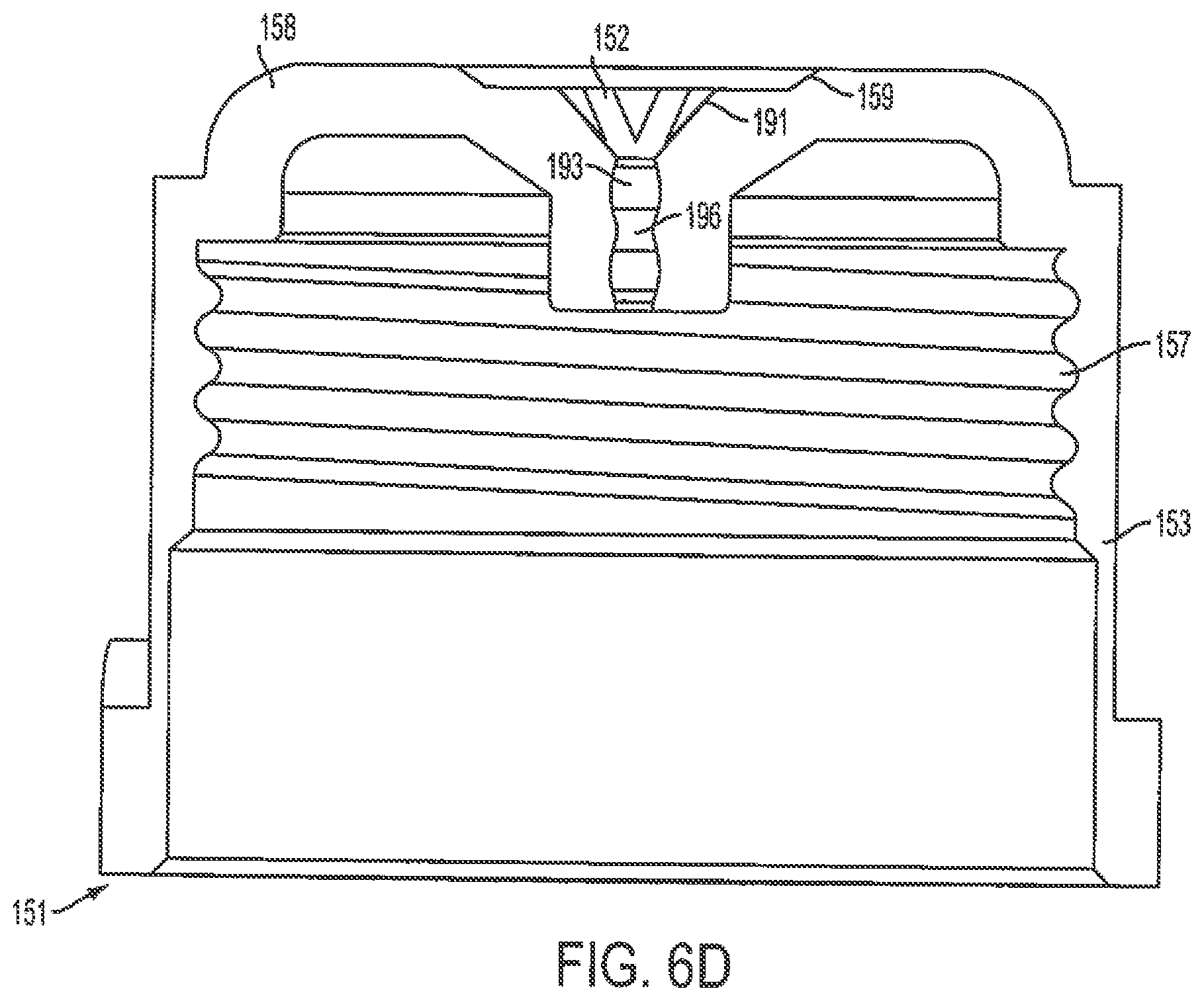
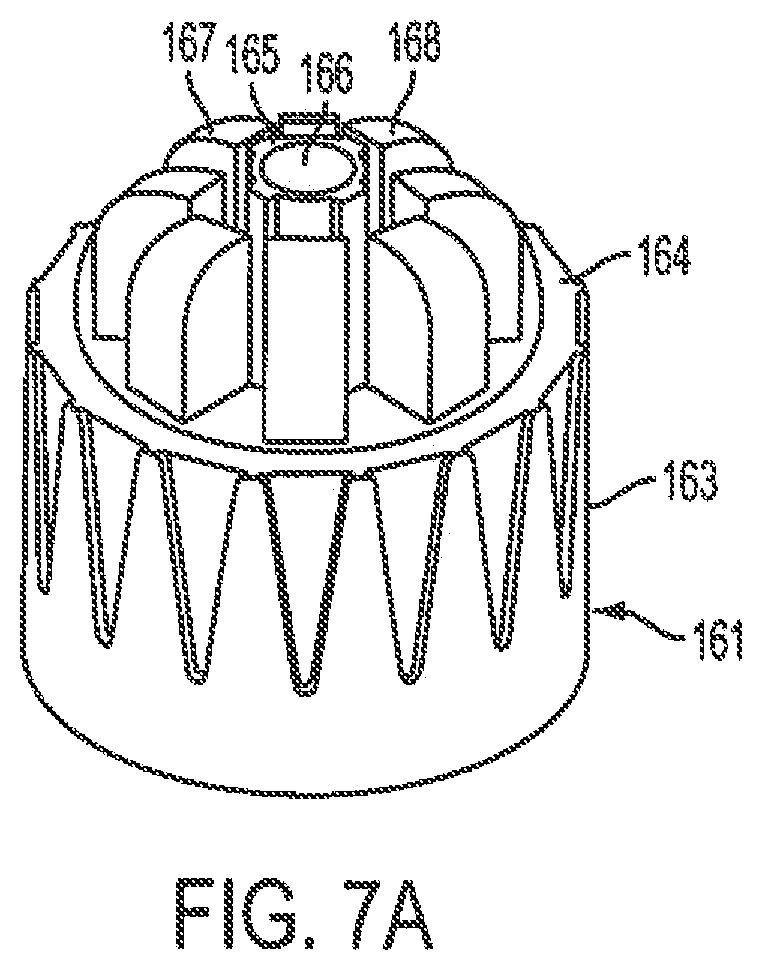
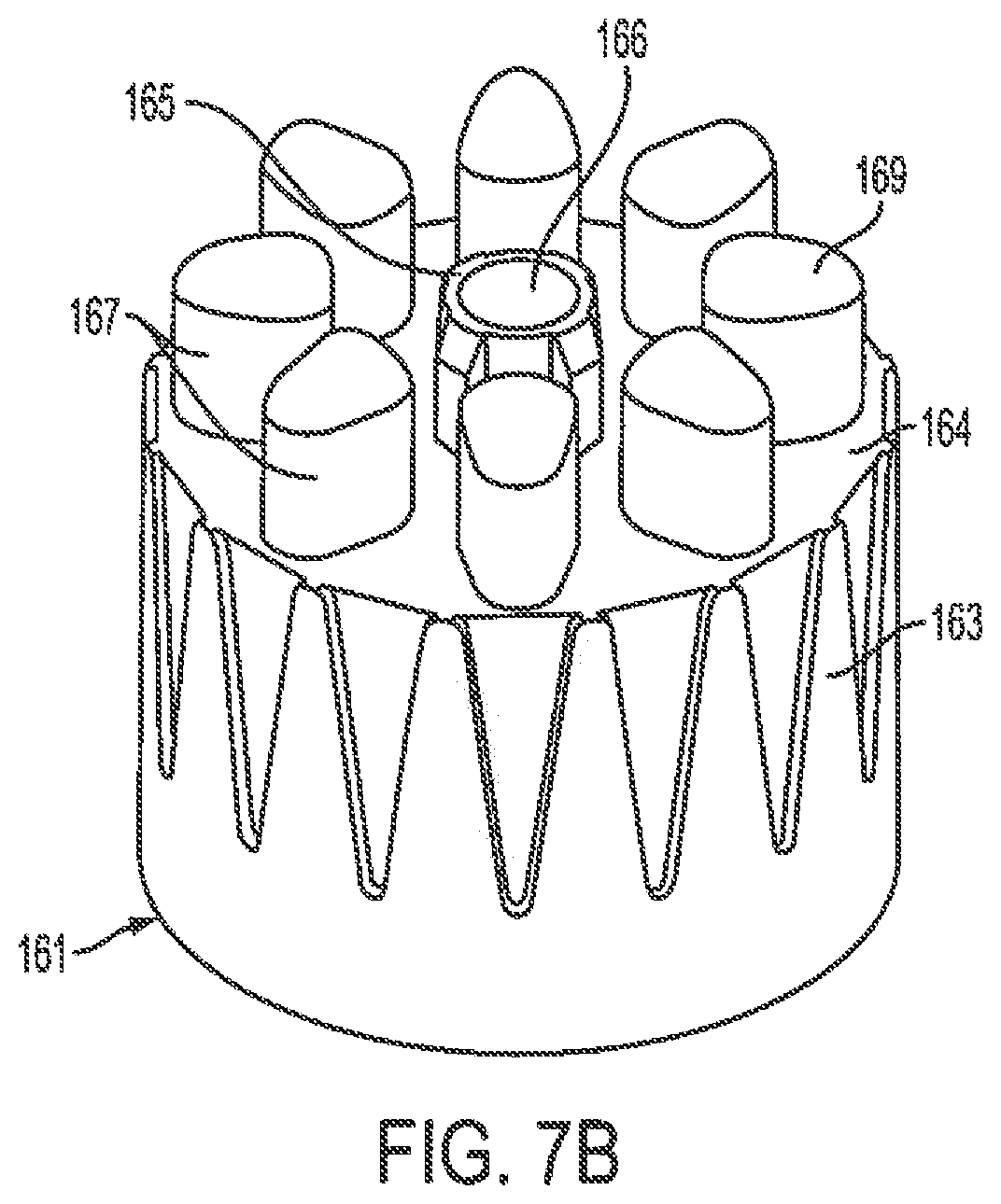
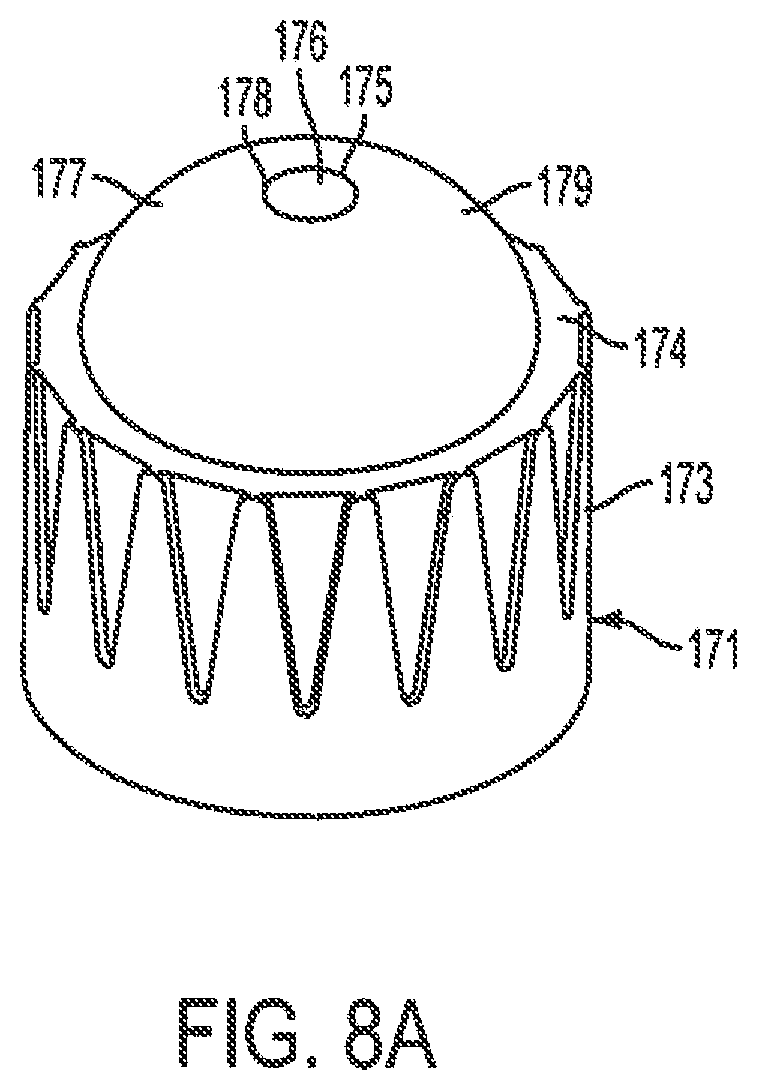
View All Diagrams
| United States Patent | 10,926,044 |
| Horvath | February 23, 2021 |
Pen needle hub having increased contact area
Abstract
A pen needle assembly having a hub with an increased surface area that contacts a patient's skin is provided. The increased contact area of the hub with the patient's skin during injection of a cannula decreases the pressure exerted against the patient's skin, thereby increasing the comfort of the patient. A bonding adhesive is disposed on an outer surface of the hub, thereby decreasing the required curing time of the adhesive. Additionally, the increased contact area, between the cannula adhesive and hub increases the strength of the bond therebetween.
| Inventors: | Horvath; Joshua D. (Sparta, NJ) | ||||||||||
|---|---|---|---|---|---|---|---|---|---|---|---|
| Applicant: |
|
||||||||||
| Assignee: | Becton, Dickinson and Company
(Franklin Lakes, NJ) |
||||||||||
| Family ID: | 1000005375312 | ||||||||||
| Appl. No.: | 16/205,686 | ||||||||||
| Filed: | November 30, 2018 |
Prior Publication Data
| Document Identifier | Publication Date | |
|---|---|---|
| US 20190091418 A1 | Mar 28, 2019 | |
Related U.S. Patent Documents
| Application Number | Filing Date | Patent Number | Issue Date | ||
|---|---|---|---|---|---|
| 15431010 | Feb 13, 2017 | 10201669 | |||
| 14806349 | Mar 28, 2017 | 9604013 | |||
| 12205711 | Sep 8, 2015 | 9125997 | |||
| 60935951 | Sep 7, 2007 | ||||
| Current U.S. Class: | 1/1 |
| Current CPC Class: | A61M 5/46 (20130101); A61M 5/349 (20130101); A61M 5/3293 (20130101) |
| Current International Class: | A61M 5/46 (20060101); A61M 5/34 (20060101); A61M 5/32 (20060101) |
References Cited [Referenced By]
U.S. Patent Documents
| 2871857 | February 1959 | Lipari |
| 4040421 | August 1977 | Young |
| 5611786 | August 1997 | Kirchofer |
| 6843783 | January 2005 | Ooyauchi |
| 6855129 | February 2005 | Jensen |
| 6955660 | October 2005 | Fisher |
| 6986760 | January 2006 | Giambattista |
| 7077830 | July 2006 | Higaki |
| 9604013 | March 2017 | Horvath |
| 10201669 | February 2019 | Horvath |
| 2004/0054336 | March 2004 | Klint |
| 2004/0186443 | September 2004 | Covino |
| 2006/0229562 | October 2006 | Marsh |
| 2007/0149924 | June 2007 | Marsh |
| 2008/0045900 | February 2008 | Alchas |
| 0903156 | Mar 1999 | EP | |||
| 978570 | Dec 1964 | GB | |||
| 1574187 | Sep 1989 | GB | |||
| 53-5891 | Jan 1978 | JP | |||
| 04-242663 | Jan 1991 | JP | |||
| 2007-503866 | Mar 2007 | JP | |||
| 2007-505677 | Mar 2007 | JP | |||
| 2005/058393 | Jun 2005 | WO | |||
| 2007/027203 | Mar 2007 | WO | |||
| 2007/047403 | Apr 2007 | WO | |||
Attorney, Agent or Firm: Dickinson Wright PLLC
Parent Case Text
CROSS REFERENCE TO RELATED APPLICATIONS
This application is a continuation of U.S. patent application Ser. No. 15/431,010, filed Feb. 13, 2017, which is a continuation U.S. patent application Ser. No. 14/806,349, filed Jul. 22, 2015, now U.S. Pat. No. 9,604,013, which is a divisional of U.S. patent application Ser. No. 12/205,711, filed Sep. 5, 2008, now U.S. Pat. No. 9,125,997, which claims the benefit under 35 U.S.C. .sctn. 119(e) of U.S. Provisional Application Ser. No. 60/935,951, filed Sep. 7, 2007, all of which are hereby incorporated by reference in their entirety.
Claims
What is claimed is:
1. A hub for an injection apparatus, comprising: a body having a substantially cylindrical side wall with an outer surface, an open first end, and a distal second end, said distal second end having an axially facing surface, said side wall having internal threads for coupling said body to the injection apparatus; an outer projection extending axially outward from said body and having a substantially cylindrical outer side surface spaced radially inward from an outer edge of said axially facing surface of said body, said outer projection having an axially facing surface with a substantially convex, curved outer surface extending between an outer peripheral edge of said side surface of said projection to a distal end of said projection, said curved outer surface configured for contacting and deforming the skin of the patient during the injection by the cannula to control deformation of the skin and limit a depth of skin deformation by said inner protrusion and limiting a depth of penetration by the cannula; and an inner protrusion extending from said body and having an axial end surrounded by and spaced from said outer projection to define an annual recess between said inner protrusion and said outer projection; said body having an opening extending axially between said open end of said body and said axial end of said inner protrusion, said opening configured for receiving a cannula and an adhesive for attaching the cannula to said opening.
2. The hub for an injection apparatus according to claim 1, further comprising said inner protrusion having an annular-shaped axial face spaced axially from an outer edge of said curved outer surface of said outer projection, said axial face of said inner protrusion and said curved outer surface of said outer projection oriented for contacting a surface of the skin of a patient during an injection by the cannula and for limiting a depth of distortion of the skin by said inner protrusion and limiting a depth of penetration by the cannula, said opening extending through said inner protrusion for supporting the cannula.
3. The hub for an injection apparatus according to claim 2, wherein said axial face of said inner protrusion is substantially flush with said distal end of said outer projection.
4. The hub for an injection apparatus according to claim 2, wherein said axial face of said inner protrusion is recessed with respect to said distal end of said outer projection.
5. The hub for an injection apparatus according to claim 2, wherein said curved outer surface of said outer projection extends between said peripheral edge of said side surface and an outer peripheral edge of said annular recess.
6. The hub for an injection apparatus according to claim 2, wherein said inner protrusion includes a plurality of ribs extending toward an inner annular surface of said outer projection.
7. The hub for an injection apparatus according to claim 2, wherein said body has a top wall, and a post extending from said top wall toward said open bottom end, wherein said post is axially aligned with said inner protrusion and where said opening extends axially through said post and said inner protrusion, said opening being configured for supporting the cannula in said post.
8. The hub of according to claim 2, wherein said axial face of said inner protrusion has a substantially flat face.
9. The hub of according to claim 2, wherein said curved outer surface of said outer projection has a substantially hemispherical shape and has a radial width greater than a radial width of said axial surface of said inner protrusion.
10. A hub for an injection apparatus, comprising: a body having a cylindrical side wall with an outer surface and a first end, an open bottom end and a top wall having a post extending toward said open bottom end; an inner protrusion extending axially outward from said first axial end of said body and having a distal end with a flat annular axial face; said inner protrusion having an opening extending from a bottom end of said post to said axial face of said inner protrusion and having an outer end at said axial face with a first inner dimension, and an inner end at said post with a second inner dimension less than said first dimension for receiving the cannula; and an outer projection circumferentially surrounding said inner protrusion and forming an annular recess between said inner protrusion and said outer projection, said outer projection having a convex outer surface extending between a peripheral outer edge and a distal end of said outer projection and having a radial surface area greater than a radial surface area of said axial face of said inner protrusion, said convex outer surface of said outer projection and said axial face of said inner protrusion configured to distribute pressure exerted against a patient's skin during an injection to limit distortion of the skin by said inner protrusion and to limit a depth of penetration by the cannula.
11. The hub for an injection apparatus according to claim 10, wherein an annular recess is formed between said outer projection and said inner protrusion.
12. The hub for an injection apparatus according to claim 10, wherein said outer projection has a continuous substantially hemispherical shape defined by said curved outer surface of said outer projection.
13. The hub for an injection apparatus according to claim 10, wherein the distal end of said outer projection is equidistant from said first end of said body to contact the patient's skin during the injection to distribute a cannula insertion force across the skin surface of the patient an limit a depth of distortion of the skin by said inner protrusion and limit a depth of penetration by the cannula.
14. The hub for an injection apparatus according to claim 10, wherein said outer projection is spaced inwardly from an outer edge of said first end of said body.
15. The hub assembly for an injection apparatus according to claim 10, wherein an outer annular surface of said inner protrusion has a plurality of outwardly extending ribs extending toward an inner annular surface of said outer projection, and where said ribs have an inclined top end converging toward said axial face of said inner protrusion.
16. A hub for an injection apparatus, comprising: a body having a first end, a side wall with an outer surface, an open bottom end and a top wall having a post extending from said top wall toward said open end, said post configured for supporting a cannula; an inner protrusion extending axially outward from said first end of said body, and having an annular axial face, an opening extending between said axial face and a bottom end of said post for receiving and supporting a cannula; and an outer projection circumferentially surrounding said inner protrusion, said outer projection having a substantially cylindrical outer side surface spaced radially inward from an outer edge of said side wall of said body and having a convex surface extending between a peripheral outer edge of said outer projection and a distal end of said outer projection and having a greater surface area and radial width relative to said axial face of said inner protrusion, said curved surface of said outer projection and said axial face of said inner protrusion configured to distribute pressure exerted against a patient's skin during an injection by the cannula to limit distortion of the skin by said inner protrusion and to limit a depth of penetration by the cannula.
Description
FIELD OF THE INVENTION
The present invention relates generally to a hub for a pen needle assembly. More particularly, the present invention generally relates to a hub having an increased surface area that contacts a patient's skin during an injection, thereby reducing the pressure exerted against the skin during the injection. Still more particularly, the present invention generally relates to a hub in which the cannula is bonded to the hub by an adhesive disposed on an outer surface of the hub, thereby increasing the strength of the bond, and which is applicable to any number of devices, such as syringes and other needle-containing devices, in which such features are desirable.
BACKGROUND
Insulin and other injectable medications are commonly given with drug delivery pens, whereby a disposable pen needle is attached to facilitate drug container access and allow fluid egress from the container through the needle into the patient.
As technology and competition advance, driving the desire for shorter, thinner, less painful, and more efficacious injections, the design of the pen needle and parts thereof becomes more and more important. Designs need to proactively address ergonomically improving injection technique, injection depth control and accuracy, the ability to be safely used and transported to disposal, and protection against misuse while maintaining the ability to be economically manufactured on a mass production scale.
Drug delivery pens, such as the existing drug delivery pen 100 shown in FIGS. 1 and 2, typically comprise a dose knob/button 24, an outer sleeve 13, and a cap 21. The dose knob/button 24 allows a user to set the dosage of medication to be injected. The outer sleeve 13 is gripped by the user when injecting medication. The cap 21 is used by the user to securely hold the pen injector device 100 in a shirt pocket, purse or other suitable location and provide cover/protection from accidental needle injury.
FIG. 2 is an exploded view of the pen needle assembly 100 of FIG. 1. The dose knob/button 24 has a dual purpose and is used both to set the dosage of the medication to be injected and to inject the dosed medicament via the lead screw 7 and stopper 15 through the medicament cartridge 12 attached through the reservoir housing or hub 20. In standard drug delivery pens the dosing and delivery mechanisms are all found within the outer sleeve 13 and are not described in greater detail here as they are understood by those knowledgeable of the prior art. The medicament cartridge 12 is typically attached to a standard pen injector housing via known attachment means, such as 1/4 turn fastening features. The distal movement of the plunger or stopper 15 within the medicament cartridge 12 causes medication to be forced into the reservoir housing 20. The medicament cartridge 12 is sealed by septum 16, which is punctured by a septum penetrating needle cannula (not shown) located within reservoir housing 20. Reservoir housing 20 is preferably screwed onto the medicament cartridge 12, although other attachment means can be used. To protect the patient needle 11, an outer shield 69 attaches to the pen needle assembly 9. An inner shield 59 covers the patient needle 11 within the outer shield 69. The cap 21 fits snugly against outer sleeve 13 to allow a user to securely carry the drug delivery pen 100.
Another existing pen needle assembly 2 is shown in FIG. 3. The needle assembly 2 includes a cover 101, an inner shield 200, a needle cannula 300, and a needle hub 400. A proximal end 310 of the needle cannula 300 is inserted into a center opening in the distal (patient) end 405 of the needle hub 400 until a predetermined length of the distal end 305 of the needle cannula 300 remains extended. The needle cannula 300 is secured by epoxy or adhesive in the distal end 405 of the hub 400 within the hub protrusion 420.
To protect users from injury and the needle cannula 300 from being damaged, the inner shield 200 covers the exposed portion of needle cannula 300. The open proximal end 210 of the inner shield 200 is placed over the exposed portion of needle cannula 300. The open proximal end 110 of the cover 100 envelops the inner shield 200, needle cannula 300, and hub 400.
Distal end 105 of the cover 101 is closed to prevent contamination and damage to the inner components of pen needle assembly 2, and to prevent injury to anyone who may handle it prior to use. The proximal end 410 of the hub 400 is typically covered by a sanitary cover (not shown) on end 110 of cover 101. The pen needle assembly 2 is then ready for shipment to a user. When the user is ready to use the pen needle assembly 2, the sanitary cover (not shown) is removed, the hub 400 is screwed onto a standard medication cartridge 12 (FIG. 2), and the cover 101 and inner shield 200 are separately removed from the hub 400/cannula 300 subassembly by a pulling action. The distal end 205 of the inner shield 200 is closed to cover the distal end 305 of the needle cannula 300 after the cover 101 is removed to protect the user from an accidental stick. The inner shield 200 is then removed to access the needle cannula 300. Thus, two separate pulling actions are required to remove both the cover 101 and the inner shield 200.
FIG. 4 is a cross-sectional view of a pen needle assembly in the configuration that it would be received by a user (with a sanitary cover not shown). An inner shield 470 covers a needle cannula 430. Additionally, the hub 460 includes a center hub protrusion 465. The skin contact plane 450 is the plane of the straight surface across the distal end of the center hub protrusion 465.
A protrusion 520, in which the cannula is bonded, extending from the hub 500 of existing pen needle assemblies is typically narrow, as shown in FIG. 5. The small surface area 530 provided at the distal end of a narrow hub protrusion 520 results in a high pressure being exerted against a patient's skin during injection of the cannula, thereby increasing discomfort of the patient.
Furthermore, the bonding adhesive used to bond the cannula to the hub is typically disposed within the hub protrusion. The adhesive is cured by exposure to ultraviolet (UV) radiation or by application of heat or chemical reaction from a two-part adhesive. Because the adhesive is within the hub protrusion, the UV radiation must pass through the hub walls, which are typically made of polypropylene, to induce curing in the adhesive. Thus, a lengthy curing time is required to cure the adhesive due to the UV radiation having to pass through the hub walls to irradiate the adhesive.
Drug delivery pens are also disclosed in U.S. Patent Application Publication Nos. 2006/0229562 to Marsh et al. and 2007/0149924 to R. Marsh, the entire contents of both of which are hereby incorporated by reference.
Accordingly, a need exists for a hub protrusion having an increased surface area that contacts a patient's skin during an injection, thereby reducing the pressure exerted against the patient's skin during the injection.
SUMMARY
In accordance with an aspect of the present invention, a hub has an increased surface area that contacts a patient's skin during an injection to reduce the pressure exerted against the patient's skin during the injection, thereby increasing the comfort of the patient.
In accordance with another aspect of the present invention, a bonding adhesive is disposed on an outer surface of the hub, thereby decreasing the required curing time.
In accordance with another aspect of the present invention, the adhesive is disposed on an outer surface of the hub to increase the contact area between the cannula adhesive and hub, thereby increasing the strength of the bond.
Objects, advantages, and salient features of the invention will become apparent from the following detailed description, which, taken in conjunction with the annexed drawings, discloses exemplary embodiments of the invention.
BRIEF DESCRIPTION OF THE DRAWINGS
The above benefits and other advantages of the various embodiments of the present invention will be more apparent from the following detailed description of exemplary embodiments of the present invention and from the accompanying figures, in which:
FIG. 1 is a perspective view of an assembled existing drug delivery pen;
FIG. 2 is an exploded perspective view of the components of the drug delivery pen of FIG. 1;
FIG. 3 is an exploded perspective view of a needle assembly for a drug delivery pen;
FIG. 4 is a cross-sectional view of the pen needle hub assembly of FIG. 3 in an as-manufactured state;
FIG. 5 is a perspective view of an existing hub for a pen needle assembly;
FIGS. 6A to 6C are perspective views of a hub for a pen needle assembly according a first exemplary embodiment of the present invention;
FIG. 6D is a perspective view of a hub for a pen needle assembly according to the first exemplary embodiment of the present invention and having additional adhesive spacing;
FIG. 7A is a perspective view of a hub for a pen needle assembly according a second exemplary embodiment of the present invention;
FIG. 7B is a perspective view of a hub for a pen needle assembly according to the second exemplary embodiment of the present invention and having additional contours for angle injections;
FIGS. 8A and 8B are perspective views of a hub for a pen needle assembly according a third exemplary embodiment of the present invention;
FIG. 8C is a cross-sectional view of a hub for a pen needle assembly according to the third exemplary embodiment of the present invention;
FIGS. 9A and 9B are perspective views of a hub for a pen needle assembly according a fourth exemplary embodiment of the present invention;
FIG. 9C is a cross-sectional view of a hub for a pen needle assembly according to the fourth exemplary embodiment of the present invention;
FIG. 10A is a perspective view of a hub for a pen needle assembly according to a fifth exemplary embodiment of the present invention; and
FIG. 10B is a cross-sectional view of a hub for a pen needle assembly according to the fifth exemplary embodiment of the present invention.
Throughout the drawings, like reference numbers will be understood to refer to like parts, components and structures.
DETAILED DESCRIPTION OF THE EXEMPLARY EMBODIMENTS
The following description and details of exemplary embodiments of the present invention, while generally disclosed in a typical drug delivery pen, as shown in FIGS. 1 and 2, could more broadly apply to a needle and hub assembly for use in conjunction with, or incorporated onto, other injection devices such as syringes, infusion devices and any other needle-containing devices in which such features are desirable.
In the exemplary embodiments of the present invention, a hub has an increased surface area that contacts a patient's skin during an injection to reduce the pressure exerted against the patient's skin during the injection, thereby increasing the comfort of the patient. Additionally, the increased contact surface area provides a more stable injection surface during injection, particularly when using cannulas having shorter lengths.
A hub 151, as shown in FIGS. 6A-6C, has a substantially cylindrical body 153. A projection, or protrusion, 155 extends outwardly from a distal end 154 of the body 153 of the hub 151. An opening 156 in the projection 151 receives a cannula. The increased surface area at the distal end 158 of the protrusion reduces the pressure exerted against a patient's skin during cannula injection, thereby increasing the patient's comfort. Preferably, the hub 151 is made of plastic, such as polypropylene.
The adhesive for bonding the cannula to the hub 151 is disposed on the outer surface at the distal end 158 of the protrusion 155. The distal end 158 is preferably provided having a contour near its outer circumference that becomes substantially flat while approaching the inner portion 159. The inner portion 159 of the projection 151 slopes downwardly toward the opening 156, thereby facilitating movement of the adhesive to the opening. A plurality of ribs 152 are disposed in the inner portion 159 that increase the contact surface area between the adhesive and the hub 151. When the adhesive is cured, the inner portion 159 is substantially filled with the adhesive such that the distal end 158 of the projection 155 is substantially flush. By disposing the adhesive on the outer surface of the protrusion 155, the UV radiation used to cure the adhesive does not have to pass through the hub walls to irradiate the adhesive. Thus, the curing time for the adhesive is decreased. Furthermore, the contact area between the cannula adhesive and the hub 151 is also increased, thereby increasing the bond strength of the cannula adhesive with the hub 151. Corona, plasma or other surface treatment may be used with this or any other embodiment to increase the adhesive/hub bond strength.
FIGS. 6A and 6B are perspective views of a hub for a pen needle assembly according to a first exemplary embodiment of the present invention, and FIG. 6C is a cross-sectional view of the hub of FIGS. 6A and 6B taken along center line of a rib 152. The cross-sectional view of FIG. 6C shows the inner threads 157 of the hub 151 and shows the opening 156 extending through the distal end 158 for communication with an interior of the hub 151. However, in yet other embodiments of the present invention, the opening 156 may be modified as shown in FIG. 6D.
FIG. 6D is a perspective view of a hub for a pen needle assembly according to the first exemplary embodiment of the present invention and having additional adhesive spacing. Specifically, as shown in FIG. 6D, an opening 196 may be provided having one or more rings 193 or other feature to facilitate adhesive filling. These rings 193 may be used with any embodiment of the needle hub to improve the cannula/hub bond strength. Furthermore, the entrance of the opening 196 may be provided with a guide space or slope 191 by modifying the ribs 152 at a point immediately surrounding the opening 196. Such a guide space 191 may facilitate needle positioning by serving as a guide during assembly.
A hub 161, as shown in FIGS. 7A and 7B, has a substantially cylindrical body 163. A protrusion 165 extends outwardly from a distal end 164 of the body 163 of the hub 161. An opening 166 in the protrusion 165 receives a cannula. A plurality of projections 167 surround the protrusion 165. The distal ends 168 of the plurality of projections 167 form a substantially planar surface for contacting a patient's skin during injection. The distal ends 168 of the plurality of projections 167 are preferably flush with or extend beyond the distal end of the protrusion 165. The increased surface area provided by the distal ends 168 of the plurality of projections reduces the pressure exerted against a patient's skin during cannula injection, thereby increasing the patient's comfort. However, in yet other exemplary embodiments of the present invention, the distal ends of the plurality of projections 167 may be modified as shown in FIG. 7B.
FIG. 7B is a perspective view of a hub for a pen needle assembly according the second exemplary embodiment of the present invention and having additional contours for angle injections. In the exemplary embodiment shown in FIG. 7B, distal end 169 of the plurality of projections 167 are contoured, rounded and/or provided with a shape and radius to facilitate injections that may occur or be attempted at angles other than perpendicular to the skin surface, while maintaining the benefit of the increased surface area provided by the distal ends of the plurality of projections.
A hub 171, as shown in FIGS. 8A-8C, has a substantially cylindrical body 173. A protrusion 175 extends outwardly from a distal end 174 of the body 173 of the hub 171. An opening 176 in the protrusion 175 receives a cannula and frustoconical shaped recess 200 as shown in FIG. 8C. A substantially hemispherical projection 177 extends outwardly from planar distal face or shoulder 204 at the distal end 174 of the hub 171. An opening 178 in the projection 177 is substantially flush with the distal end of the protrusion 175. The distal end 179 of the projection 177 is a substantially flat planar annular shaped axial face with a annular outer edge 202 for contacting a patient's skin during injection. The distal end 179 of the projection 177 is preferably flush with or extends beyond the distal end of the protrusion 175 (FIG. 8C). The increased surface area provided by the distal end 179 of the projection 177 reduces the pressure exerted against a patient's skin during cannula injection, thereby increasing the patient's comfort. The recessed ring 178 of the surface of the hub 171 may be used to facilitate attachment of a cannula shield. The recessed ring on the surface of the hub may also be used to facilitate manufacturing of the pen needle assembly by collecting adhesive that might overflow from the adhesive well at the center of the hub.
As shown in greater detail in FIG. 8C, the adhesive well 195 may be provided at or near the end of the protrusion 175. Furthermore, as noted above and more clearly shown in FIG. 8C, the distal end of the projection 177 is preferably substantially flush with or extends slightly beyond the distal end of the protrusion 175. Further, inner threads of the hub 171 are shown.
A hub 181, as shown in FIGS. 9A-9C, has a substantially cylindrical body 183. A protrusion 185 extends outwardly from a distal end 184 of the body 183 of the hub 181. An opening 186 in the protrusion 185 receives a cannula. A substantially spherical projection 187 extends outwardly from the distal end 184 of the hub 181. A distal surface 188 of the projection 187 is substantially flush with a distal end 182 of the protrusion 185. The distal surface 188 of the projection 187 is substantially planar for contacting a patient's skin during injection. The distal surface 188 of the projection 187 is preferably flush with or extends beyond the distal end 182 of the protrusion 185. An inner portion 189 of the projection 187 slopes inwardly and downwardly toward the protrusion 185 to form a valley, which is adapted to receive another member of the pen needle assembly, such as a shield. The increased surface area provided by the distal surface 188 of the projection 187 reduces the pressure exerted against a patient's skin during cannula injection, thereby increasing the patient's comfort.
As shown in greater detail in FIG. 9C, an adhesive well 197 may be provided at or near the end of the protrusion 185. Further, inner threads 199 of the hub 181 are shown.
A hub 1001, as shown in FIGS. 10A-10B, has a substantially cylindrical body 1003. A protrusion 1005 extends outwardly from a distal end 1004 of the body 1003 of the hub 1001. An opening 1006 in the protrusion 1005 receives a cannula. A substantially spherical projection 1007 extends outwardly from the distal end 1004 of the hub 1001. A distal surface 1008 of the projection 1007 is substantially flush with a distal end of the protrusion 1005. The distal surface 1008 of the projection 1007 is substantially planar for contacting a patient's skin during injection. The distal surface 1008 of the projection 1007 is preferably flush with or extends beyond the distal end of the protrusion 1005.
The exemplary embodiment shown in FIG. 10A is formed having two concentric wells 1010 and 1020, with the inner well 1010 provided to capture excess adhesive and the outer well 1020 provided to receive and secure a shield, but are not limited thereto.
As shown in greater detail in FIG. 10B, an adhesive well 1012 may be provided at or near the end of the protrusion 1005. The adhesive well 1012 facilitates visual inspection of the amount of adhesive in the well by using a single top view inspection camera. The more adhesive in the well, the wider the circle of adhesive that is visible in a top-down view. Current inspection methods overfill the glue well and look for glue overflowing the hub protrusion. Further, inner threads 1014 of the hub 1001 are shown.
The foregoing embodiments and advantages are merely exemplary and are not to be construed as limiting the scope of the present invention. The description of exemplary embodiments of the present invention is intended to be illustrative, and not to limit the scope of the present invention. Various modifications, alternatives and variations will be apparent to those of ordinary skill in the art, and are intended to fall within the scope of the invention, as defined in the appended claims.
* * * * *
D00000

D00001

D00002

D00003

D00004

D00005

D00006

D00007

D00008

D00009

D00010

D00011

D00012
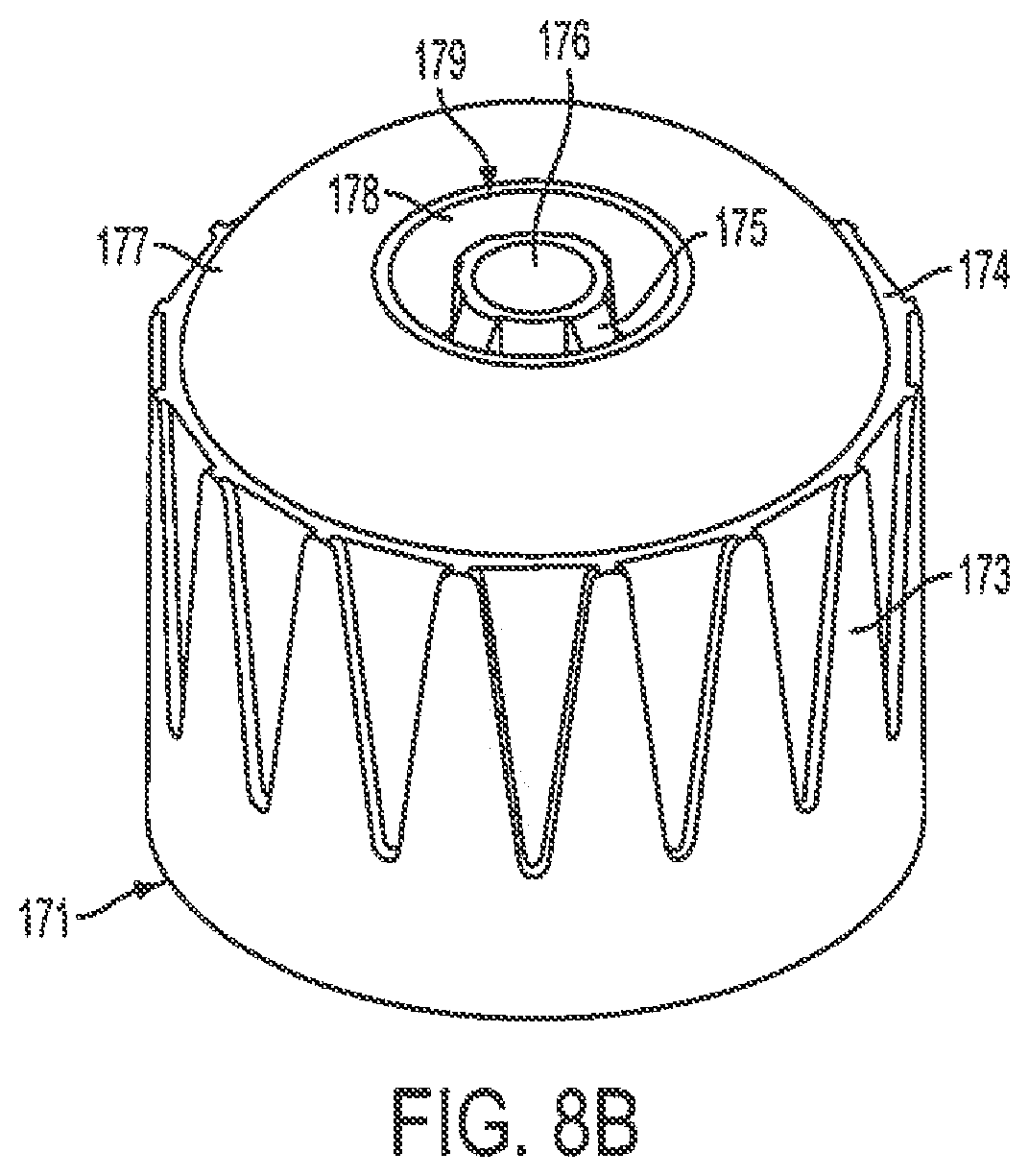
D00013

D00014

D00015

D00016

D00017
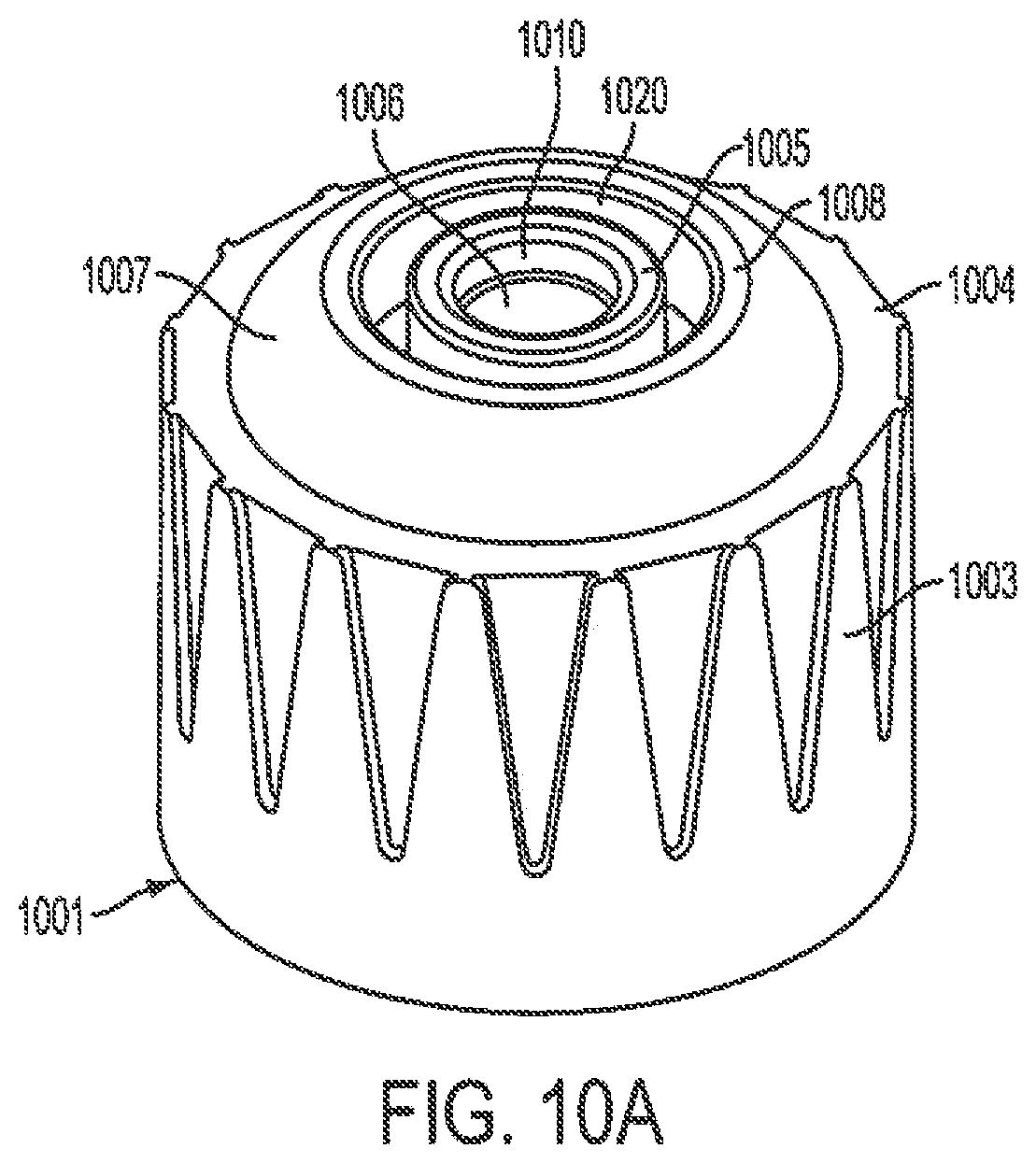
D00018

XML
uspto.report is an independent third-party trademark research tool that is not affiliated, endorsed, or sponsored by the United States Patent and Trademark Office (USPTO) or any other governmental organization. The information provided by uspto.report is based on publicly available data at the time of writing and is intended for informational purposes only.
While we strive to provide accurate and up-to-date information, we do not guarantee the accuracy, completeness, reliability, or suitability of the information displayed on this site. The use of this site is at your own risk. Any reliance you place on such information is therefore strictly at your own risk.
All official trademark data, including owner information, should be verified by visiting the official USPTO website at www.uspto.gov. This site is not intended to replace professional legal advice and should not be used as a substitute for consulting with a legal professional who is knowledgeable about trademark law.